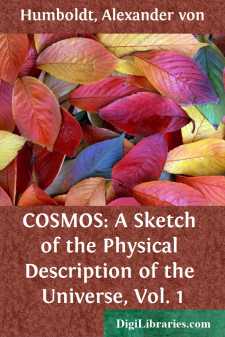History
- Africa 30
- Americas (North Central South West Indies) 50
- Ancient 68
- Asia 58
- Australia & New Zealand 8
- Canada 41
- Caribbean & West Indies 1
- Civilization 20
- Eastern Europe 12
- Europe 310
- Expeditions & Discoveries 60
- General
- Historical Geography 1
- Jewish 9
- Latin America 3
- Medieval 8
- Middle East 13
- Military 248
- Revolutionary 8
- Study & Teaching 5
- United States 353
- Western Europe 56
- World 13
General Books
Sort by:
by:
Ellice Hopkins
CHAPTER I In a banquet given in honor of Heinrik Ibsen by a Norwegian society known as the Woman's League, in response to a speech thanking him in the name of the society for all he had done for the cause of women, the poet, while disclaiming the honor of having consciously worked for the woman's cause—indeed, not even being quite clear as to what the woman's cause really was, since in...
more...
THOUGHTS ON HISTORY I do not propose in this paper to enter into any general inquiry about the best method of writing history. Such inquiries appear to me to be of no real value, for there are many different kinds of history which should be written in many different ways. A diplomatic, a military, or a parliamentary history, dealing with a short period or a particular episode, must evidently be treated...
more...
by:
Daniel Davenport
The settlement of New Milford began in 1707, exactly a century after that of Jamestown, Va. At that time, although Milford and Stratford at the mouth of the Housatonic had been settled almost seventy years, and the river afforded a convenient highway into the interior, for much of the distance, this place, only thirty miles from the north shore of Long Island Sound, was still beyond the extreme...
more...
CHAPTER I. INTRODUCTORY. Social organisation. Associations in the lower stages of culture. Consanguinity and Kinship. The Tribe. Kinship groups; totem kins; phratries. The passage from what is commonly termed savagery through barbarism to civilisation is marked by a change in the character of the associations which are almost everywhere a feature of human society. In the lower stages of culture, save...
more...
VOLUME I [p 2 is blank] p 3 TRANSLATOR'S PREFACE. ———————————- I CAN not more appropriately introduce the Cosmos than by presenting a brief sketch of the life of its illustrious author.* While the name of Alexander von Humboldt is familiar to every one, few, perhaps, are aware of the peculiar circumstances of his scientific career and of the extent of his labors in almost...
more...
THE WAR THAT NEVER ENDS If, at last the sword is sheathed,And men, exhausted, call it peace,Old Nature wears no olive wreath,The weapons change—war does not cease. The little struggling blades of grassThat lift their heads and will not die,The vines that climb where sunbeams pass,And fight their way toward the sky! And every soul that God has made,Who from despair their lives defendAnd struggling...
more...
PREFACE This book is not intended to be a full or detailed history of animal morphology: a complete account is given neither of morphological discoveries nor of morphological theories. My aim has been rather to call attention to the existence of diverse typical attitudes to the problems of form, and to trace the interplay of the theories that have arisen out of them. The main currents of morphological...
more...
CHAPTER I Shakespeare Translations in Norway In the years following 1750, there was gathered in the city of Trondhjem a remarkable group of men: Nils Krog Bredal, composer of the first Danish opera, John Gunnerus, theologian and biologist, Gerhart Schøning, rector of the Cathedral School and author of an elaborate history of the fatherland, and Peter Suhm, whose 14,047 pages on the history of Denmark...
more...
HISTORY My theme is history. It is an old subject, which has been discoursed about since Herodotus, and I should be vain indeed if I flattered myself that I could say aught new concerning the methods of writing it, when this has for so long a period engaged the minds of so many gifted men. Yet to a sympathetic audience, to people who love history, there is always the chance that a fresh treatment may...
more...
THE INN-YARDS BEFORE the building of regular playhouses the itinerant troupes of actors were accustomed, except when received into private homes, to give their performances in any place that chance provided, such as open street-squares, barns, town-halls, moot-courts, schoolhouses, churches, and—most frequently of all, perhaps—the yards of inns. These yards, especially those of carriers' inns,...
more...











